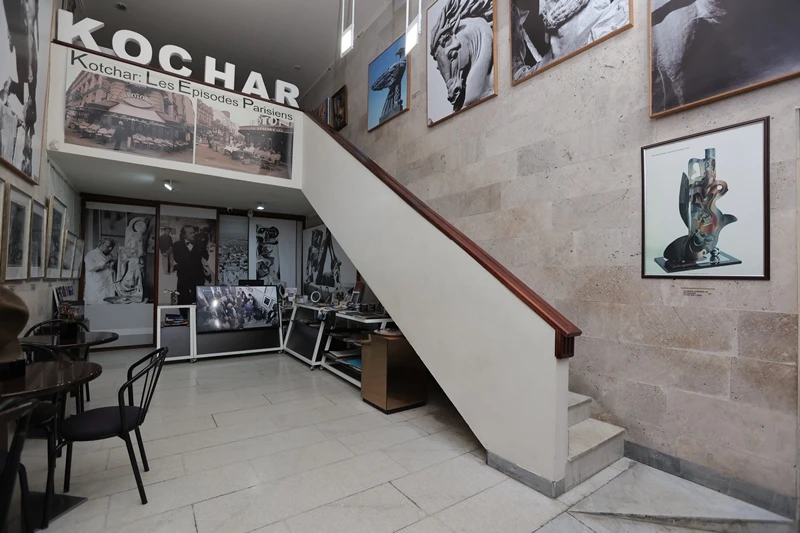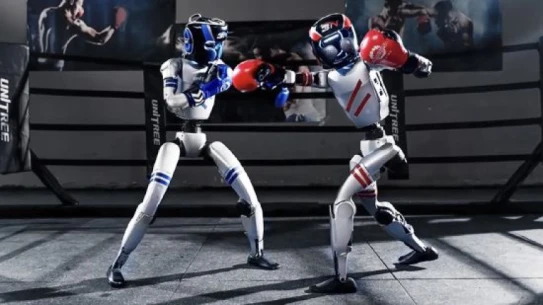Yervand Kochar's works have a great influence on modern art. His legacy is not limited to paintings or sculptures. he spoke his own, new language in art. Kochar's ideas were very new for his time, and he often repeated: "All artists are afraid of time, but for me time is the only hope." He writes
"The Trace":
No matter how exceptional the contribution made in art is, often after the death of great masters it depends on the heirs to preserve their legacy. In 1979, at the age of 79, Yervand Kochar died, leaving a great mark in the history of art and a huge legacy: sculptures, paintings, graphics.
He bequeaths everything to his wife, Manik Mkrtchyan, who takes upon herself the preservation of the Great Master's legacy and the spread of art. In the same year, the Kochar Museum was founded on the site of Yervand Kochar's studio with the efforts of his wife, and the official opening of the museum took place on June 22, 1984. Manik Mkrtchyan, the founder of the museum, divides Yervand Kochar's paintings between his two sons, Haykaz and Ruben.
In order to replenish the museum, Ruben and Haykaz deposit their share of paintings to the museum, with the condition of returning them. This is also evidenced by the document sealed and signed by the museum in 1984. According to Manik Mkrtchyan's wish, Lala Martirosyan, the wife of his eldest son, Haykaz, who helped Manik in founding the museum, was appointed director of the museum after his death. Later, with the efforts of Lala Martirosyan, the museum was able to withstand the difficult 90s. in those years there was even an attempt to rob the museum.
40 years have passed since the opening of the museum, now the director of the museum is the daughter of Lala Martirosyan and Haykaz Kochar, Karine Kochar. This year Yervand Kochar's 125th anniversary is celebrated, various events are organized in Armenia and abroad. Apart from the events of the anniversary year, the tense relations between Yervand Kochar's son Ruben Kochar and the "Yervand Kochar" museum came into the spotlight. The reason is the 21 works deposited in the museum forty years ago. According to Ruben Kochar, seven of those paintings have disappeared.
The museum does not comment on where the paintings are. "When I returned from the United States, I went to the museum, then the director told me: why did you come, what are you doing, what do you have to do with the museum? Why did you leave? But I didn't leave, I handed over the works in the museum to you for you to manage, because I'm going on other business, if I didn't go, I could easily be the director.
When I asked, where are the files that I handed over to you, from what I see, I see that you have kept them well, thank you very much for keeping my files, but where are the rest? that's when I learned that seven cases simply don't exist," says Ruben Kochar. Based on the contract signed between him and the museum in 1984, Ruben Kochar submits a written request to the museum to return his property. the pictures. According to Ruben Kochar, he wrote the application to return the pictures for one purpose: to find out where those files are. However, the museum rejects Ruben Kochar, demanding to prove that these works are his property.
In February 2024, Ruben Kochar wrote a letter to Prime Minister Nikol Pashinyan regarding this incident. Criminal proceedings are initiated based on the letter. The Investigative Committee informed "Hetkin" that the preliminary investigation in the case is ongoing. "Hetq" has also made a request to the Ministry of Education, Science, Culture and Sports to find out at what intervals the existence of the museum's fund is checked, and as a result of the checks, whether missing specimens were found?
Deputy Minister Alfred Kocharyan replied that inspections are carried out no less than once in three years. As the year is jubilee and the museum is busy with events, the inspections scheduled for 2024 will be carried out in January 2025. The ministry sent the attached letter to the "Yervand Kochar" museum the answer of director Karine Kochar, from which it becomes clear that the inspection of the museum's fund is carried out by the museum itself, about the results informing the ministry.
We present the answer of Karine Kochar, director of "Yervand Kochar" Museum. "There were six inspections of the Yervand Kochar Museum in 2000, 2010, 2013, 2016, 2019, 2021. As a result of the above-mentioned inspections, no facts regarding the absence of any museum object from the museum's collection were recorded." where exactly are those seven works, instead he gave a general one comment on the situation. According to Karine Kochar, this dispute arose after the death of her father, Haykaz Kochar.
"He (Ruben Kochar-ed.) discussed all issues with his brother and did not have any disagreements for so many years," says Karine Kochar, adding that she did not want this topic to be discussed on public platforms, as it is not honorable for the Kochar family.
"I should note that nothing has disappeared. The inheritance was actually managed by two brothers.
And a part of them was bought by the state, and the money was transferred to Ruben Kochar, a part was managed by Haykaz Kochar, and during all these years there was no disagreement between the two brothers regarding grandfather's inheritance, and it is very sad for me. It is extremely unfortunate that Ruben Kochar makes such statements today.
I think that we should be very responsible for keeping the reputation, name, and honor of Kochar, the Kochar family high and try to avoid such dishonorable activities and statements," says Karine Kochar. To understand how legitimate Ruben Kochar's appeal to the museum is, the pictures with the request to return and how legitimate the refusal of the museum is, we talked with lawyer Arpine Hovhannisyan, who based on the information we gave interpreted the situation from the point of view of the law.
"Yervand Kochar's wife passed all of Kochar's property, including works of fine art, and especially if he divided the works of fine art between his sons before his death, it means that we are dealing here with the transfer of ordinary ownership rights, not inheritance. ", says the lawyer. Referring to the works given to the museum by Ruben Kochar in 1984 and the contract signed regarding it, Arpine Hovhannisyan notes: "Actually, a contract has been signed for the transfer of the right to display works, which you can sign with the owner or right holder, this is a fact.
In this case, if the museum had a doubt as to whether he (Ruben Kochar-ed.) is the owner or not, the grounds for ownership should have been requested at that time. Now, even if such a dispute does occur, it cannot occur in circumstances where, for example, a museum holds works of fine art and says, "Bring me a piece of paper that it belongs to you," that question should have been raised long ago. in 1984," says lawyer Arpine Hovhannisyan.
We tried to understand what possible scenarios could be the disappearance of those 7 pictures.
Ruben Kochar said that according to his information, one of the paintings was given to the museum by the former Minister of Culture Hasmik Poghosyan. He learned about it from the museum. One of Yervand Kochar's relatives saw the other one in the "Ark" museum of the Armenian Church in Moscow. We contacted the diocese there, from where they confirmed that they have 4 works of Yervand Kochar on display.
By comparing the pictures, it became clear that three of them, including one of Ruben Kochar's missing works, are from the Yervand Kochar museum collection. Those pictures are still available in the relevant section of the museum's website. We found out that these works were donated to the museum in Moscow in 2020 by Moscow-based businessman Emil Sargsyan, who is the son of the poet Sarmen and is known as a criminal authority.
He was also a big collector and donated a total of 40 works to the museum. Shortly after donating, in the same year, Emil Sargsyan died. We tried to contact Emil Sargsyan's son to find out when and from whom his father acquired Yervand Kochar's files. However, he did not want to give us any comments. The outcome of the personal and legal disputes between the heirs is still unknown. However, preservation of Yervand Kochar's heritage is the imperative of time, the time that was Yervand Kochar's only hope.


